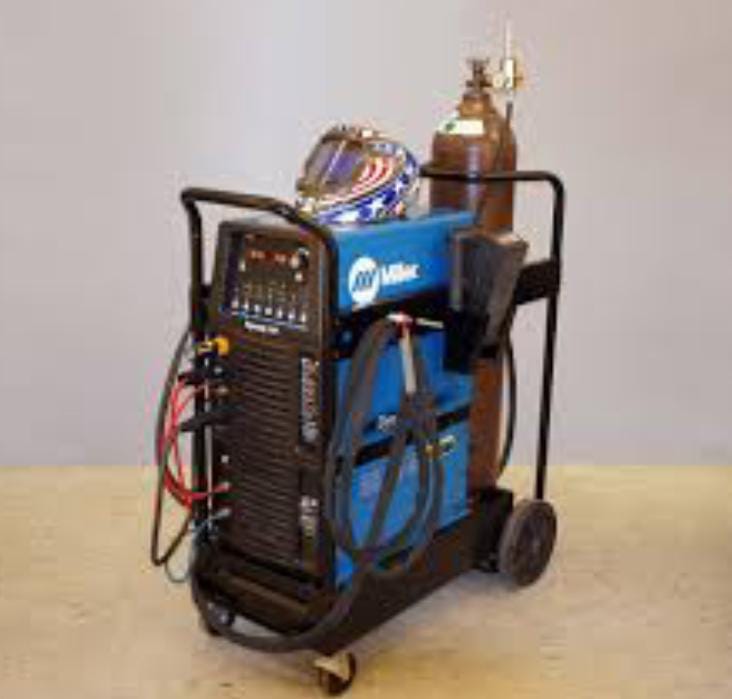Technology
Exploring the World of Tig Welding: Techniques and Applications

Tig welding, short for Tungsten Inert Gas welding, is a popular welding process known for its precision, versatility, and high-quality welds. In this article, we delve into the intricacies of Tig welding, exploring its techniques, applications tig welders, and the key factors that make it a preferred choice in various industries.
Understanding Tig Welding
Tig welding utilizes a non-consumable tungsten electrode to create the weld, along with a shielding gas (typically argon or helium) to protect the weld area from atmospheric contamination. Unlike some other welding processes, Tig welding does not require a flux to protect the weld pool, making it suitable for welding a wide range of metals, including stainless steel, aluminum, copper, and titanium.
The Tig Welding Process
The Tig welding process begins with preparing the workpiece, ensuring it is clean and free from any contaminants that could affect the quality of the weld. Next, the welder sets up the welding machine, adjusting parameters such as amperage, voltage, and gas flow rate according to the specific requirements of the job.
Once everything is set up, the welder strikes an arc between the tungsten electrode and the workpiece, generating the heat needed to melt the base metal. As the metal melts, a filler rod may be added to the weld pool to reinforce the joint and achieve the desired weld bead shape.
Throughout the welding process, the welder maintains precise control over the arc length, travel speed, and filler rod deposition to produce strong, clean welds with minimal distortion.
Techniques for Tig Welding
Tig welding requires a steady hand and precise control of the welding torch to achieve optimal results. Some key techniques include:
- Arc Length Control: Maintaining a consistent arc length between the electrode and the workpiece is crucial for producing quality welds. Too long of an arc can lead to instability and inconsistent penetration, while too short of an arc can cause tungsten contamination.
- Torch Angle: The angle of the welding torch relative to the workpiece influences the shape and penetration of the weld bead. By adjusting the torch angle, welders can control the direction and width of the weld pool.
- Travel Speed: Controlling the speed at which the welding torch moves along the joint is essential for achieving proper fusion and penetration. A steady, consistent travel speed helps maintain uniformity throughout the weld.
- Filler Rod Manipulation: Skillful manipulation of the filler rod allows welders to control the size and shape of the weld bead, as well as ensure proper reinforcement of the joint.
Applications of Tig Welding
Tig welding finds widespread use across various industries due to its ability to produce high-quality welds with minimal distortion. Some common applications include:
- Aerospace: Tig welding is commonly used in the aerospace industry for welding thin, lightweight materials such as aluminum and titanium, where precision and strength are critical.
- Automotive: Tig welding is favored in automotive manufacturing for its ability to weld a wide range of materials, including stainless steel and exotic alloys, with precise control and minimal heat input.
- Pipe Fabrication: Tig welding is often used in pipe fabrication for joining stainless steel and other corrosion-resistant materials in applications such as food processing, pharmaceuticals, and chemical plants.
- Artistic Fabrication: Tig welding is popular among artists and fabricators for its ability to create intricate welds with fine detail, making it ideal for sculptures, architectural features, and custom metalwork.
Conclusion
Tig welding offers unmatched precision, versatility, and quality, making it a preferred choice in industries where the integrity of welds is paramount. By mastering the techniques and applications of Tig welding, welders can create strong, durable welds that meet the highest standards of craftsmanship and performance.
Whether you’re fabricating aerospace components, automotive parts, or intricate works of art, Tig welding provides the precision and control needed to bring your vision to life.
For quality Tig welders and welding supplies, visit SSIMDER Tig Welder Collection to explore a range of options suited to your welding needs.






















